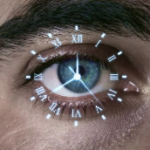November is Diabetes Month®
Diabetes is a serious disease. If it is not managed, it can damage many parts of the body, leading to heart attacks, strokes, amputation, blindness, kidney failure and nerve damage.
About Diabetes
Prevalence
- Nearly 26 million children and adults in the United States have diabetes.
- Another 79 million Americans have prediabetes and are at risk for developing type 2 diabetes.
- Recent estimates project that as many as one in three American adults will have diabetes in 2050 unless we take steps to Stop Diabetes.
The Toll on Health
- Two out of three people with diabetes die from heart disease or stroke.
- Diabetes is the leading cause of kidney failure.
- Diabetes is the leading cause of new cases of blindness among adults.
- The rate of amputation for people with diabetes is 10 times higher than for people without diabetes.
- About 60-70 percent of people with diabetes have mild to severe forms of nerve damage that could result in pain in the feet or hands, slowed digestion, sexual dysfunction and other nerve problems.
Source: American Diabetes Association
Diabetes and Vision
Glaucoma
According to American Diabetes Association, people with diabetes are 40% more likely to suffer from glaucoma than people without diabetes. The longer someone has had diabetes, the more common glaucoma is. Risk also increases with age.
Cataracts
Many people without diabetes get cataracts, but people with diabetes are 60% more likely to develop cataracts, according to the American Diabetes Association. People with diabetes also tend to get cataracts at a younger age and they progress faster.
Retinopathy
Diabetic retinopathy is a general term for all disorders of the retina caused by diabetes. There are two major types of retinopathy: nonproliferative and proliferative.
Nonproliferative retinopathy
In nonproliferative retinopathy, the most common form of retinopathy, capillaries in the back of the eye swell and form pouches. Nonproliferative retinopathy can move through three stages (mild, moderate, and severe), as more and more blood vessels become blocked.
Proliferative retinopathy
In some people, retinopathy progresses after several years to a more serious form called proliferative retinopathy. In this form, the blood vessels are so damaged they close off. In response, new blood vessels start growing in the retina. These new vessels are weak and can leak blood, blocking vision, a condition called vitreous hemorrhage. The new blood vessels can also cause scar tissue to grow. After the scar tissue shrinks, it can distort the retina or pull it out of place, a condition called retinal detachment.
The Good News
Diabetes complications can be prevented or delayed by properly managing blood glucose, blood pressure and cholesterol levels. Eating healthy, being physically active and not smoking also can help lower the risk of diabetes complications. It is recommended that people with diabetes have an annual comprehensive exam to catch any vision issues early to help prevent or slow down vision loss.
To schedule a comprehensive annual diabetic eye exam at Ophthalmic Consultants of the Capital Region call 518-274-3123.

